New research shows significant improvement for individuals who exceeded the FDA-labeled 5% word recognition ability
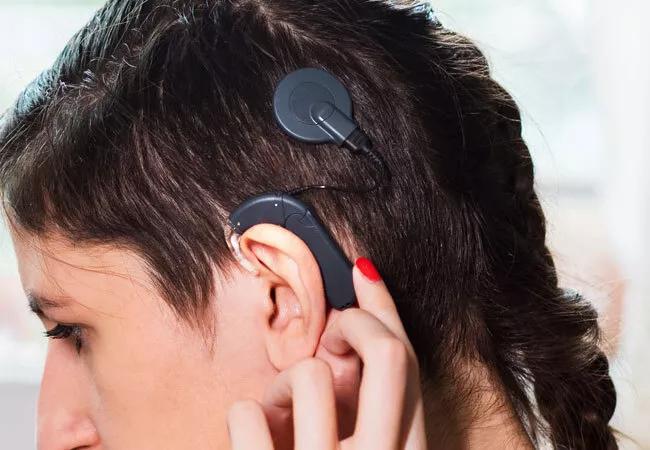
Written by Sarah A. Sydlowski, AuD, PhD, MBA and Erika Woodson, MD
Cleveland Clinic is a non-profit academic medical center. Advertising on our site helps support our mission. We do not endorse non-Cleveland Clinic products or services. Policy
Hearing loss has meaningful and quantifiable consequences for the listener, even when only one ear is affected. This is particularly true for patients with single-sided deafness (SSD) or asymmetric hearing loss (AHL), which is when the poorer hearing ear receives limited or no benefit from a hearing aid.
Individuals with one unaidable ear commonly report perceived hearing handicap at levels that often approach severe levels.1 Individuals listening to the world with one ear have difficulty localizing sound, hearing sounds from the deafened side and understanding speech in background noise. These problems arise even when their stronger ear has normal hearing. Additionally, the hearing loss in the poorer ear may be accompanied by disabling tinnitus. Many patients report social consequences that include feelings of embarrassment and isolation resulting from the inability to accurately follow conversations in a noisy environment.2 The challenges are perhaps intensified by the fact that hearing loss is a nearly invisible disorder, with many communication partners unaware of the disability.3
Cochlear implantation (CI) in cases of AHL and SSD improves speech recognition in both quiet and noisy environments and has been shown to effectively suppress tinnitus and improve localization and quality of life.,4,5,6 Patients who preoperatively demonstrate elevated levels of stress, depressive symptoms and anxiety show improvement post-CI and cortical reorganization can be halted and reversed.6,7,8, 9
Although CI is a very effective treatment for patients with single-sided deafness (SSD) and asymmetric hearing loss (AHL), the more traditional approach to determining CI candidacy relies on testing both ears together, i.e., bilateral or “best-aided” hearing. This approach, therefore, overlooks patients with AHL or SSD who could greatly benefit. Additionally, the candidacy criteria approved by the Food and Drug Administration (FDA) in July 2019 extends candidacy to patients with AHL and SSD but limits aided word recognition ability to 5% in the ear to be implanted. Conversely, for patients with bilateral hearing loss, the poorer hearing ear could achieve up to 60% aided word recognition and still meet candidacy for CI with a short electrode array. Thus, current guidelines for SSD and AHL fail to recognize the candidacy of patients with significantly asymmetric hearing loss who demonstrate very little functional hearing ability, but are still below the threshold for traditional CI in the ear to be implanted. These patients all receive limited benefit from a hearing aid in the poorer ear.
The Cleveland Clinic Hearing Implant Program is committed to optimizing access to cochlear implantation and closing the vast gap between those who could benefit from this life-changing technology and those who receive it. We consider the capability of each ear independently and recommend CI anytime we expect improved outcomes for that side, independent of the capability of the contralateral ear (except in cases where we are limited by payer restrictions, e.g., Medicare Part B). We aim to determine CI candidacy as soon as limited benefit from a hearing aid can be confirmed. To this end, we rely heavily on low-context stimuli, such as Consonant-Nucleus-Consonant word lists, to isolate the capabilities of the ear in question rather than allowing the patient’s ability to use higher-level processing to decode incomplete information to cloud our clinical decision-making.
We retrospectively reviewed the charts of 63 adults with AHL (N=48) or SSD (N=15) approved for implantation using this ear-specific, word recognition-based approach. Both word and sentence ability in the implanted ear improved in cases of SSD and AHL, often after one month of listening experience. For both groups, the majority of individuals demonstrated improvement. Most importantly, significant improvement was noted for individuals who exceeded the FDA-labeled 5% word recognition ability.
It is important to note that we strongly encourage streamed auditory training for 30-60 minutes per day at least five days per week in the three to six months after activation. In our experience, isolating the implanted ear to allow for focused practice with the CI is critical to success, thus motivation to restore binaural hearing and willingness to undergo a rehabilitative therapy program are essential to our candidate selection process.
Looking ahead, our focus is on removing barriers to CI for our patients. It has been estimated that only 3-5% of potential CI candidates receive one, leaving nearly 1,000,000 candidates nationally who are hearing poorly and could benefit from this technology10 By focusing on maximizing hearing for everyone in every ear, our program will successfully do its part to close that gap.
REFERENCES
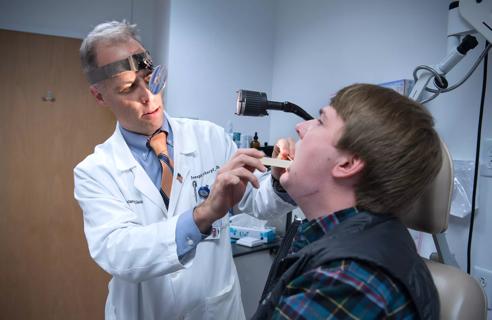
Strong communication with the patient and a thorough approach are essential
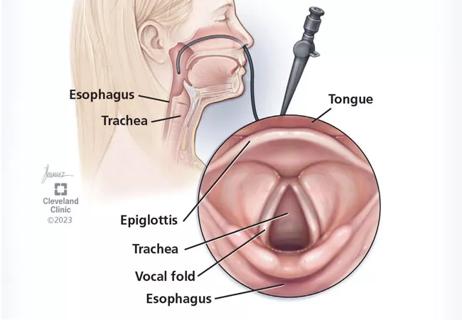
Cleveland Clinic physicians weigh in

New research adds to understanding of an understudied link
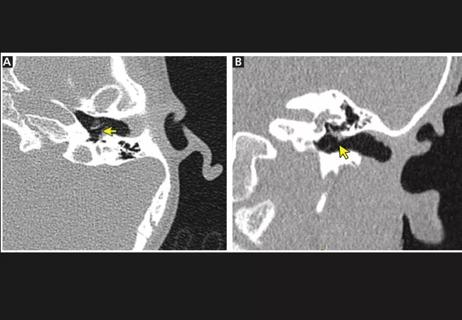
The rare condition can cause structural damage if untreated
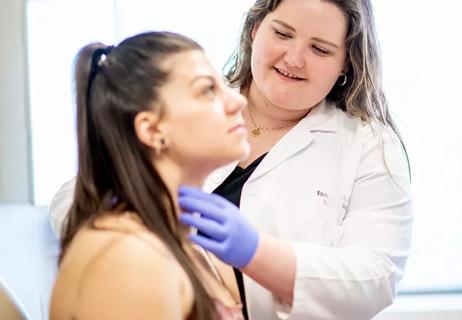
A recently published case series highlights the broad range of laryngeal findings that can present among individuals with EDS

Newly published research shows how the surgical technique is a game-changer for patients with ORN

First five-year prospective study provides valuable data to guide decision-making
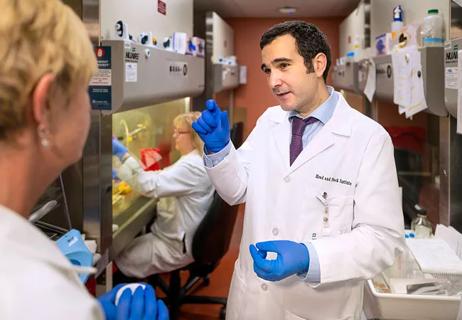
The Head & Neck Institute will make its initial footprint in the newly constructed BioRepository building